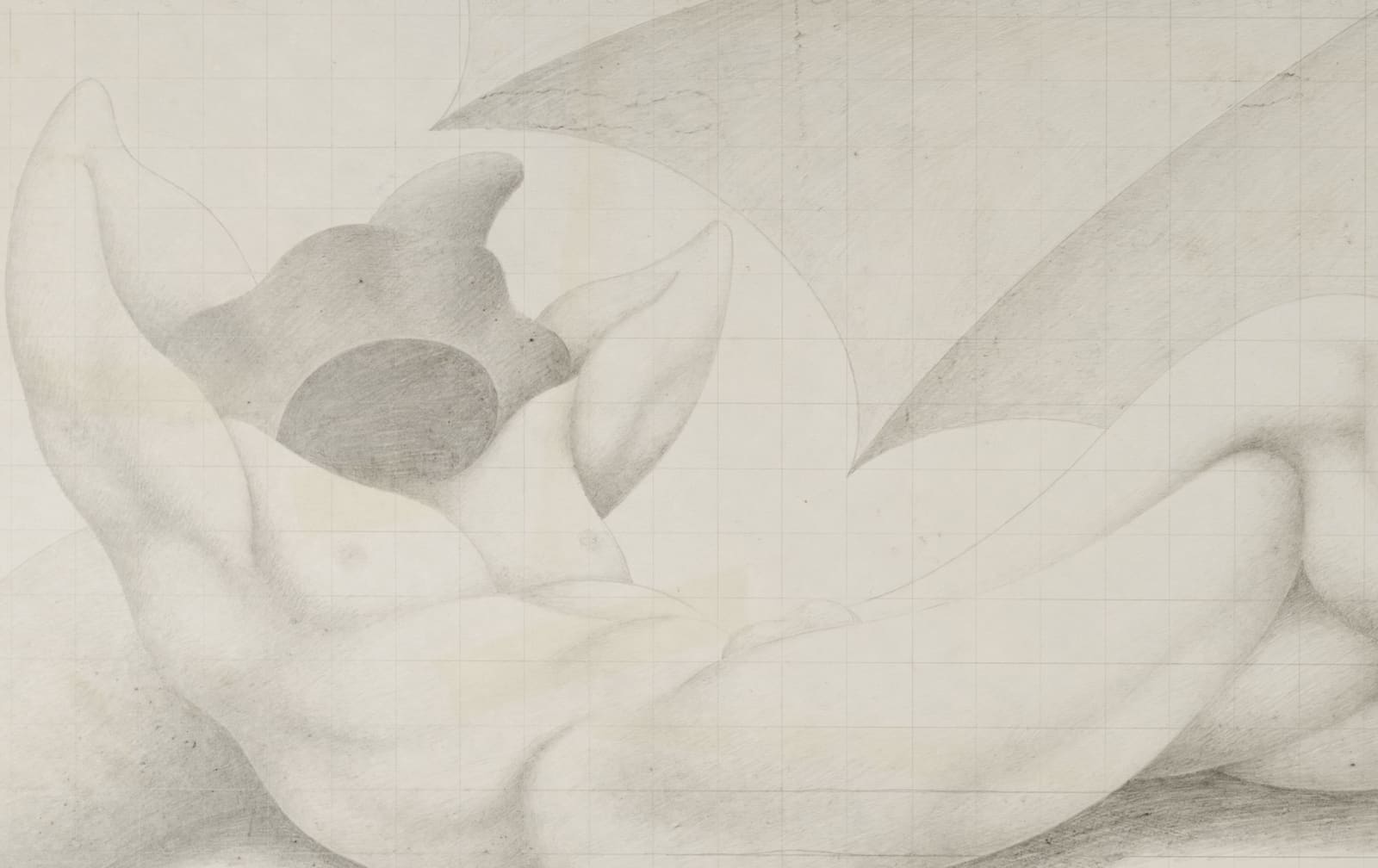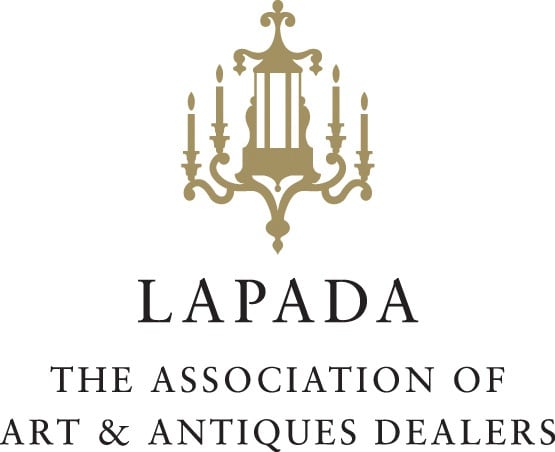Henry Orlik b. 1947
With artist's stamp lower right
Framed: H. 80 cm x W. 182 cm., H. 31½ in. x W. 71½ in.
Further images
In this beautiful study, in which Orlik displays his immaculate, soft draughtsmanship, he draws a man and woman relaxing on a beach, a huge sun-umbrella shields them, and they rest horizontally with their legs intertwined. The man has his hands raised behind his head, and it appears that his head is engulfed in or is becoming, fittingly, the wide jaw of a basking shark as he ‘basks’ in the sun; his crossed legs entwine with the woman’s legs as if they are part of the same body or an extension of each other’s bodies. She lies facing the other direction and her thick hair twists towards a beautiful point (croissant-shaped); her hand reaches up into her hair but, in Orlik’s clever, witty drawing, it also reaches between her legs and her body becomes reversed so that she has legs at both ends. They share their ‘rest’ and it is impossible to tell where one begins and the other ends, their bodies are so incorporated in each other’s. It is a perfect, relaxed and romantic study of the connection between two lovers.
‘After, when they disentwine
You from me and yours from mine,
Neither can be certain who
Was that I whose mine was you.
To the act again they go
More completely not to know.’
Robert Graves, ‘The Thieves’
This wonderful image seems to encapsulate much of Orlik’s fascination for quantum physics in that when two particles become entangled, they instantly affect each other’s properties, no matter the distance between them. This metaphorically holds significance for telepathy and collective consciousness and, of course, the tender connection between two lovers.
The female figure’s pose suggests Giorgione’s Sleeping Venus (1510, Dresden State Art Museum) in which Venus is reclined with one arm reaching above her head while her other hand is placed on her groin. In Orlik’s drawing, the raised arm is also the arm that reaches to her groin as the body becomes reversed and the head becomes both her legs and her head. Similarly, the muscular torso of the male figure is suggestive of Michelangelo’s Adam in the Sistine Chapel, but here he leans backwards, his arms behind his head, no longer laconically reaching for God. He, thus, in Orlik’s drawing becomes Adam who is Everyman and the female figure becomes Eve or Venus (as Eve from Renaissance times has traditionally been seen as an ecclesiastical version of the pagan Venus). She, then becomes Everywoman to Adam’s Everyman and their ‘Rest after work’ becomes the post-coital moment after their symbolic mating which will create offspring to populate the world; they represent the father and mother of mankind. The sensual atmosphere of Orlik’s drawing is heightened by the shading and shape of the upper knee and calf of the male figure which also appears to be a diving figure (with the knee being the buttocks and the calf being the stomach and torso), which dives down beneath the female’s legs.










